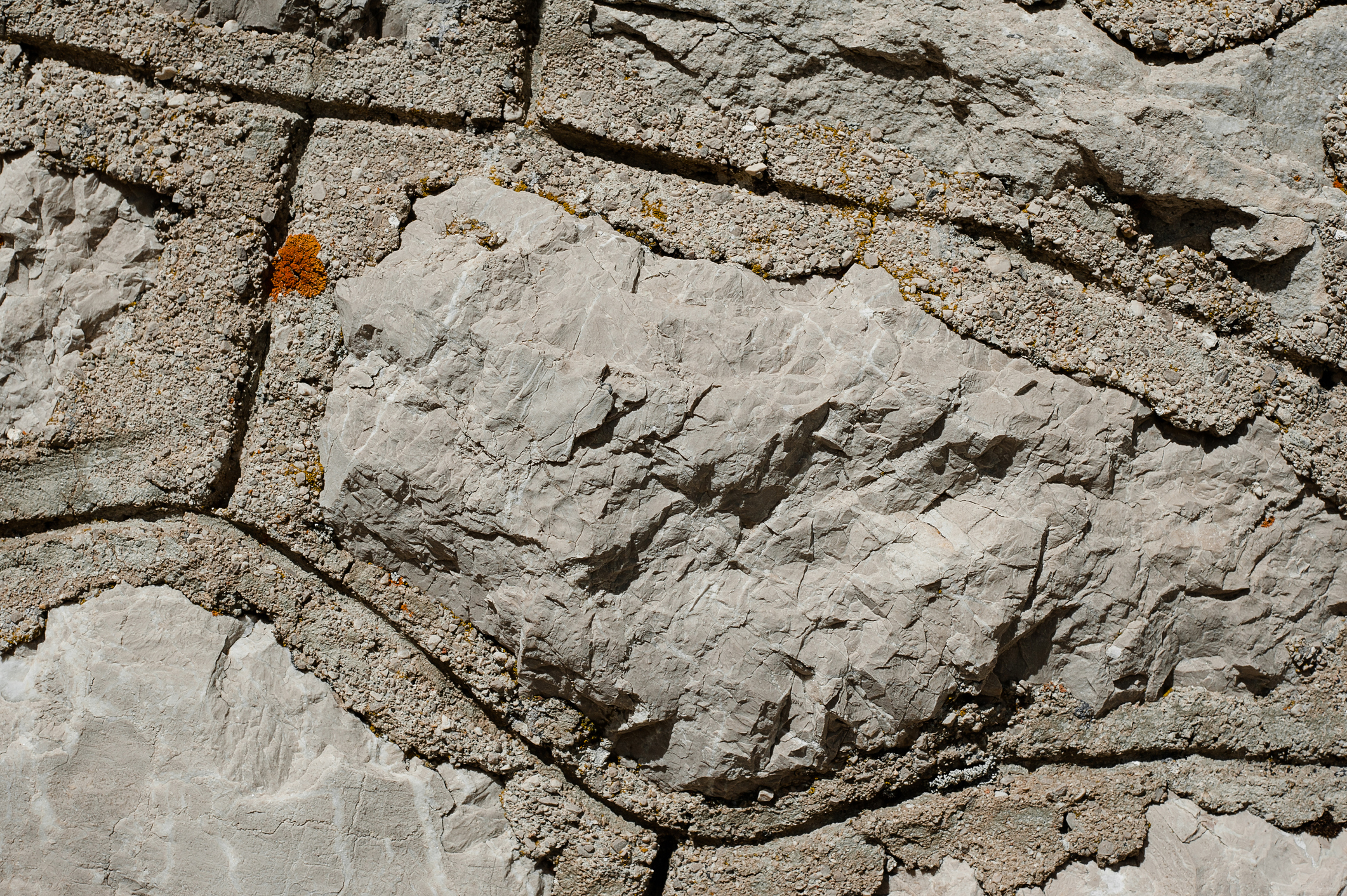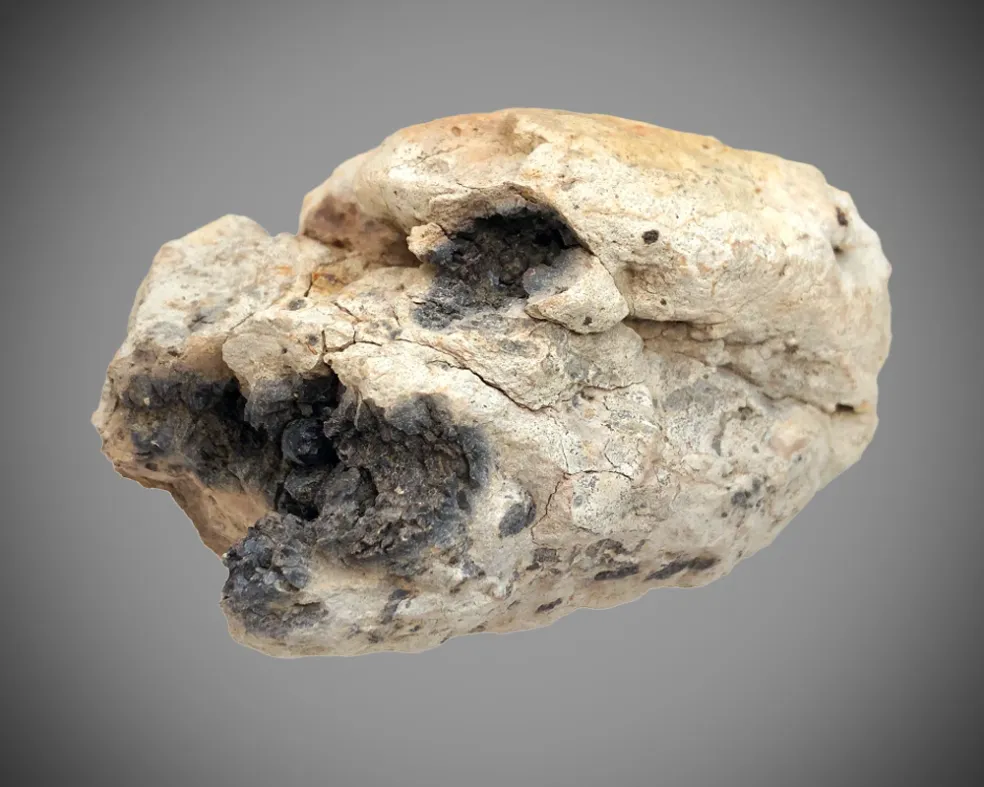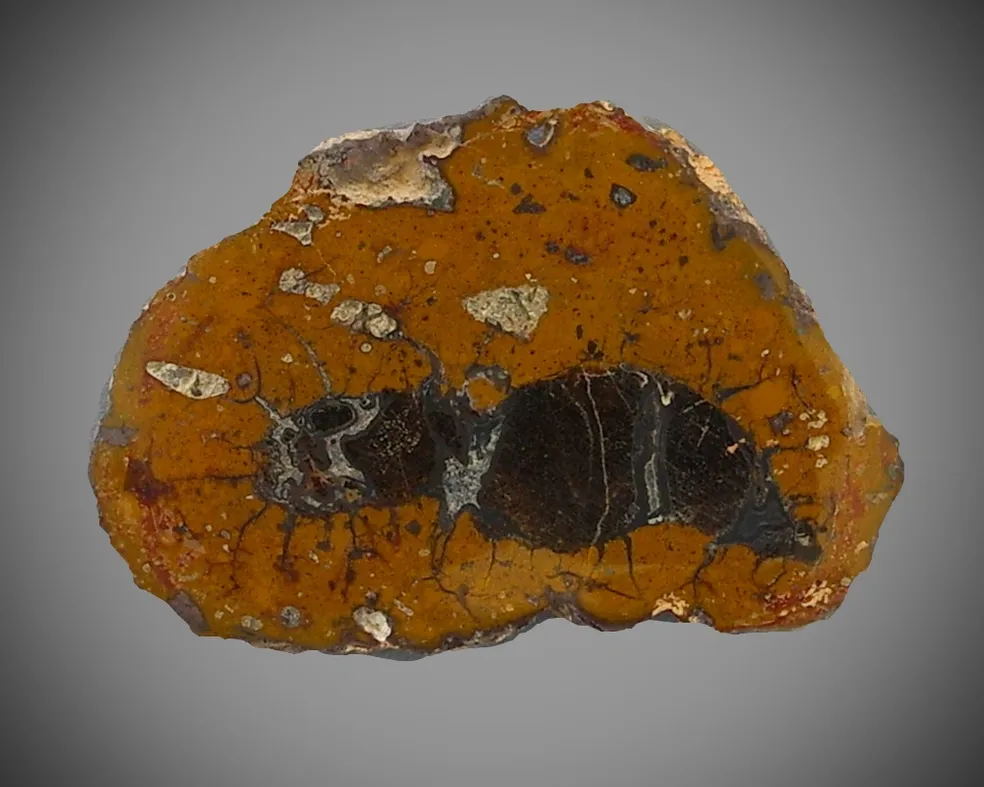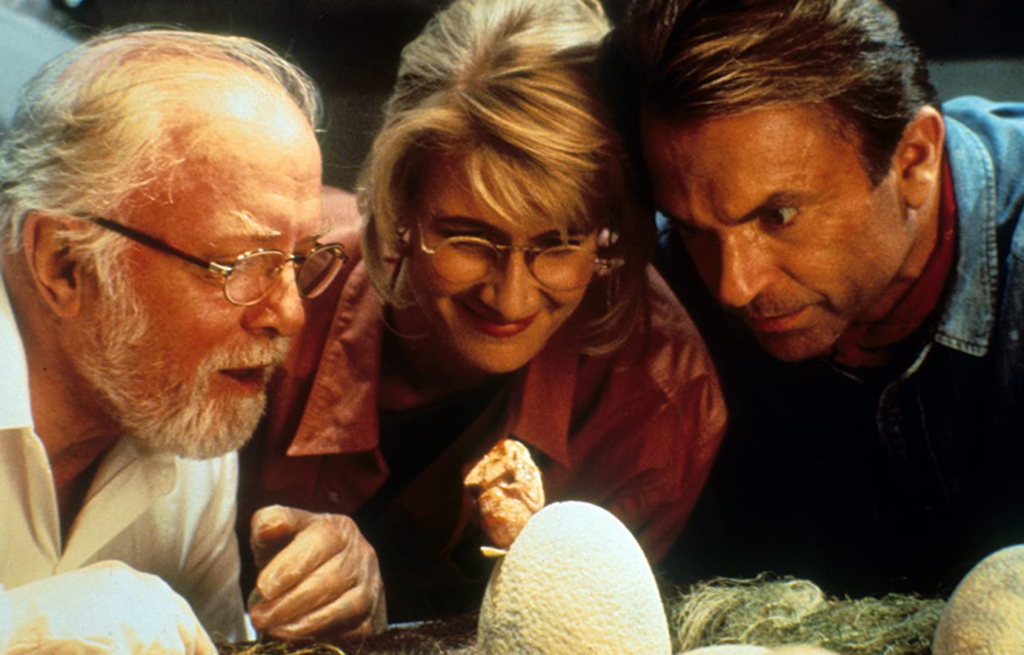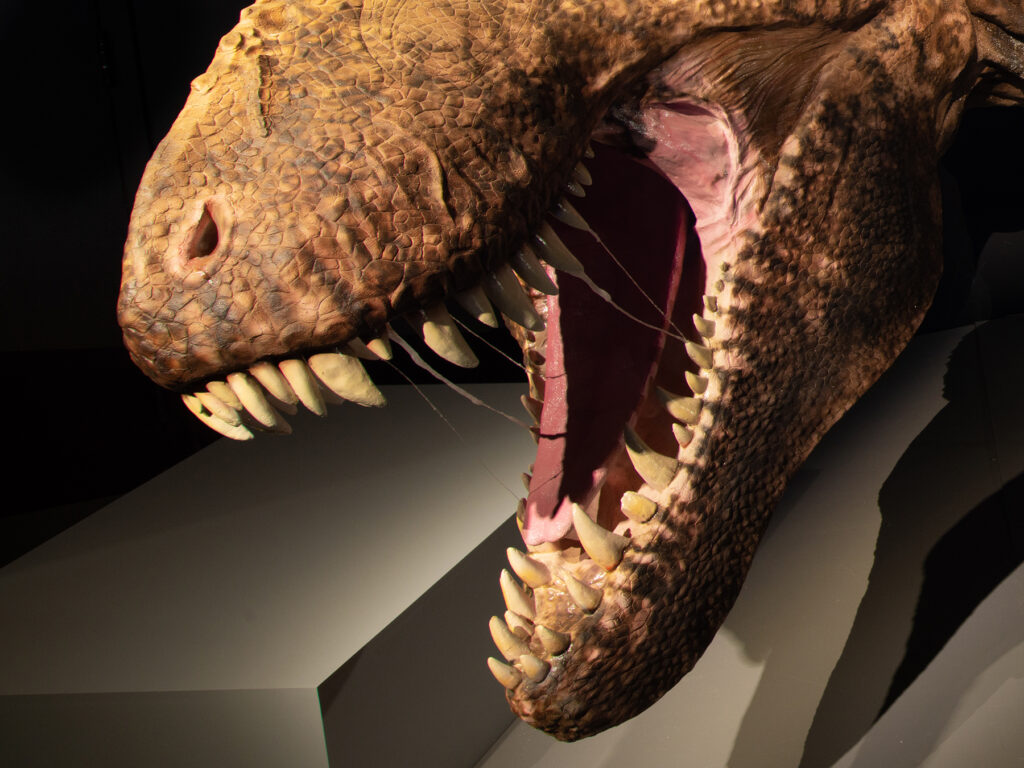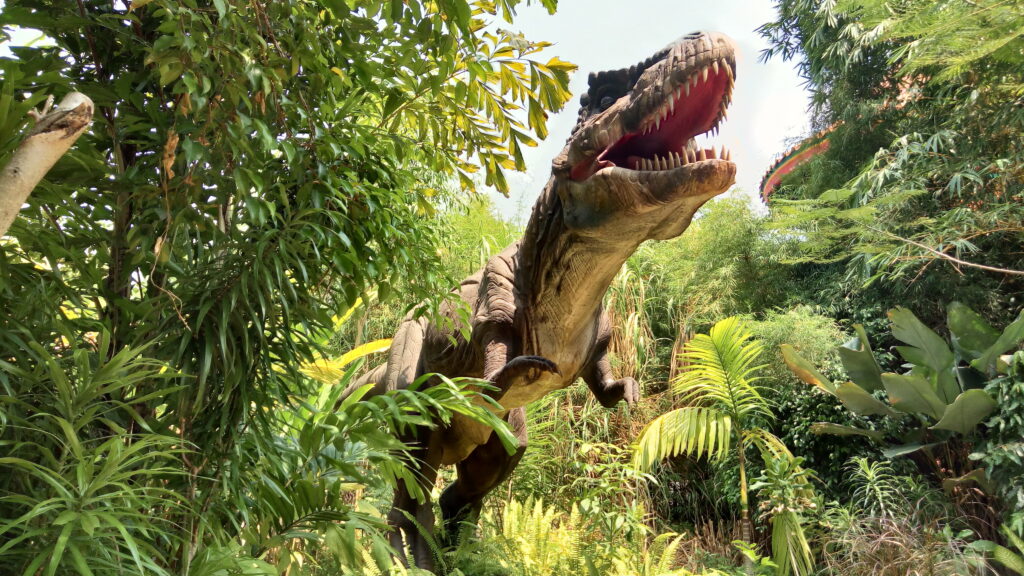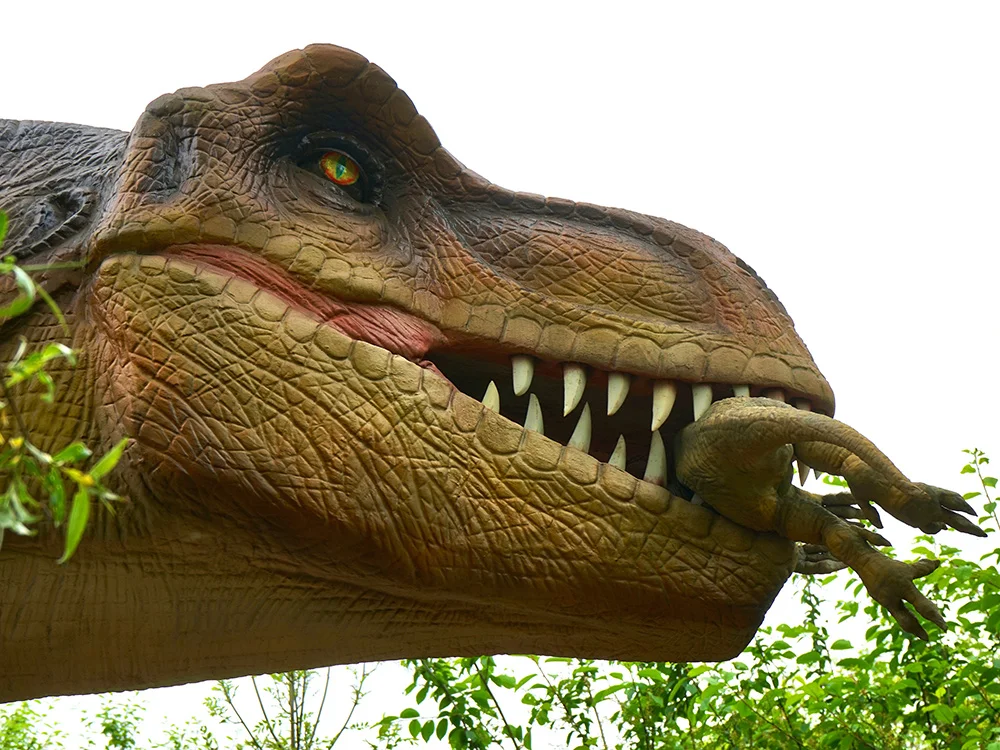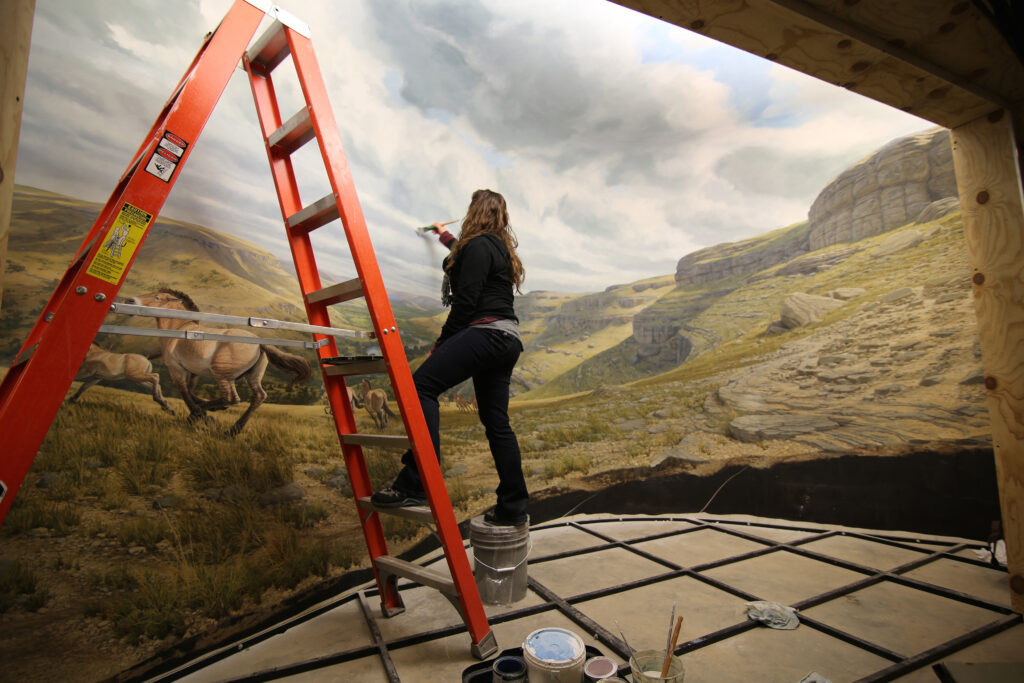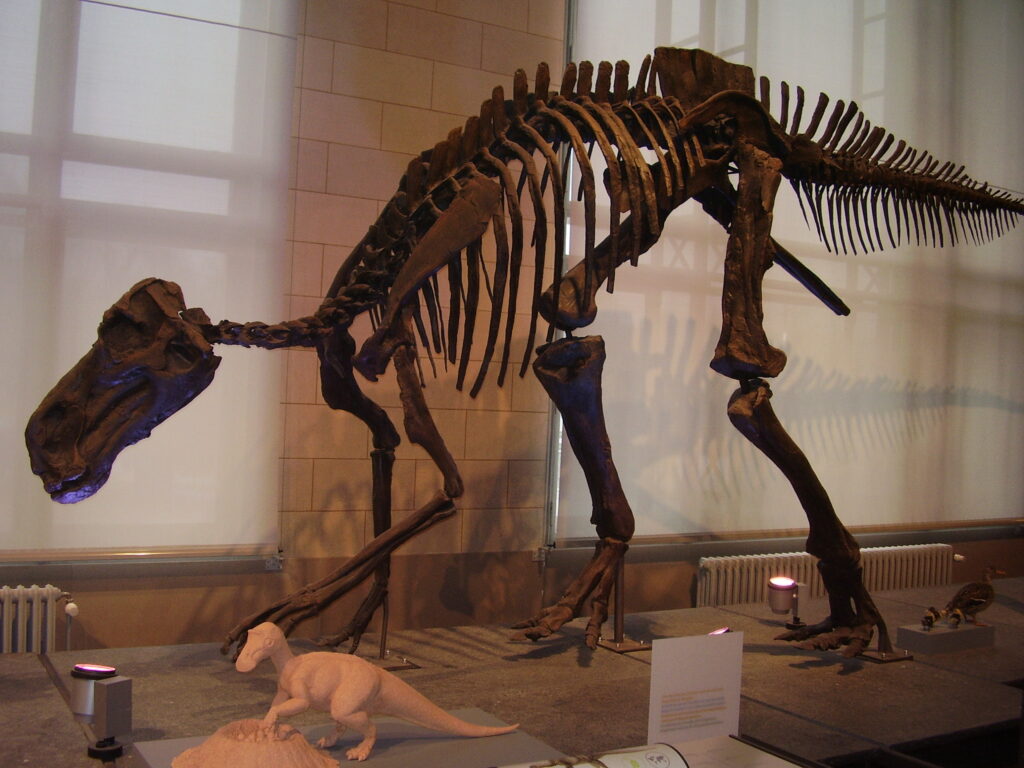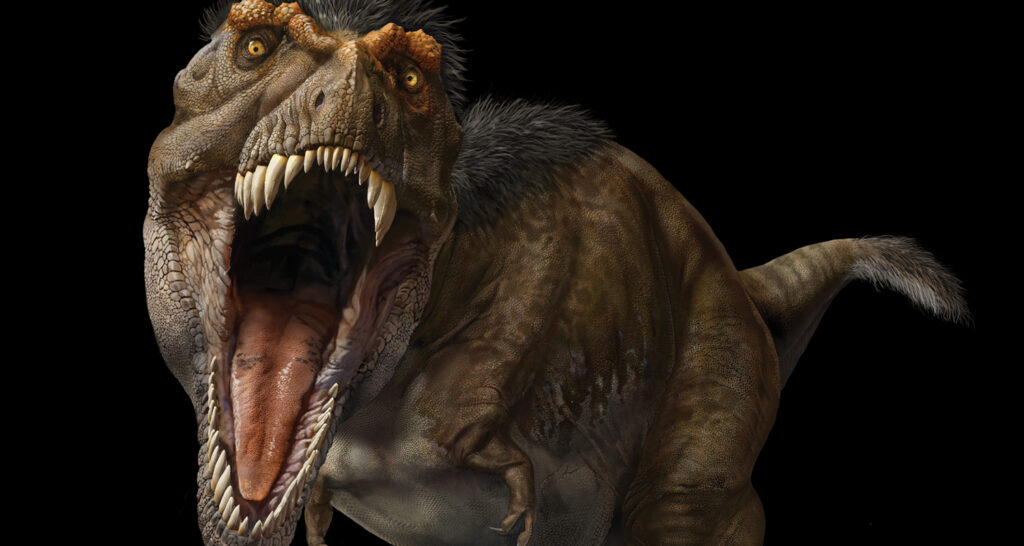Millions of years ago, in present-day Saskatchewan, dinosaurs moseyed about freely. Small raptors captured critters with their unusually long arms. The heavily armoured Ankylosaurus crammed down cycads, ferns, and ginkgos for dinner. And fast-footed dinosaurs that resembled ostriches dashed through swamps and forests, running from predators like Dromaeosaurus.
Even the king of the tyrant lizards, Tyrannosaurus rex, called southwestern Saskatchewan home. Here T. rex with its menacing gait (save for its tiny arms!) stalked prey, gorged itself on fellow dino chums, and, as most living organisms do, defecated said dino chums.
In fact, a rare coprolite (aka fossilized feces of prehistoric animals) from a T. rex defecated over 66 million years ago is pedestalized at the Royal Saskatchewan Museum.
When this coprolite (aka incredibly old poop) was discovered by paleontologist Tim Tokaryk and museum technician Wendy Sloboda almost three decades ago, it was the world’s largest carnivore coprolite and the only known coprolite from a T. rex.
It also contained bits of bone that paleontologists believe belonged either to a young Edmontosaurus or Triceratops that the T. rex feasted on.
This finding helped paleontologists confirm what this predator’s massive jaws and serrated teeth (and that spine-chilling scene with Martin Ferrero in Jurassic Park) had previously indicated: T. rex had a bone-crushing bite.
Since then, coprolites from other animals including tyrannosaurs, herbivorous dinosaurs, marine reptiles and sharks have been found in Saskatchewan, Alberta, and other fossil hotbeds.
Coprolites from theropod dinosaurs in the Hell Creek Formation (L) and the Judith River Formation (R) in Montana, US. (Photos courtesy of The Poozeum)
Finding the famed T. rex poop was fortuitous because as Dr. Karen Chin (a paleoecologist and the world’s leading expert in coprolites) explains, coprolites are rarer in the fossil record than body fossils.
Coprolites are trace fossils, meaning that they show traces left by an organism, unlike body or skeletal fossils (bones, teeth, skulls, shells, etc.) which are the actual parts of an organism.
Trace fossils also include footprints and trackways, which can tell paleontologists about the environment an animal lived in, if it was a solitary or herd animal, its stride, and more.
But coprolites are much harder to find.
Dr. Chin says this is because feces are composed of soft materials, making them harder to preserve. They can be washed away by rain, trampled under the feet of other animals or eaten by them.
Feces also decompose quickly because they contain billions of bacteria. If the waste isn’t hastily buried after the animal defecates, a disturbance—like rain or wind—can easily destroy it.
Specific conditions are needed to preserve coprolites over millennia, says Dr. François Therrien, Curator of Dinosaur Palaeoecology at the Royal Tyrrell Museum of Palaeontology (RTMP) in Alberta.
He adds that a river environment would be ideal because the dissolved minerals in the water (like calcium) can help fossilize and preserve feces. This is one of the reasons why it is more common for paleontologists to find coprolites of fish and reptiles.
Dr. Therrien estimates that at the RTMP (home to coprolites from a relative of T. rex and from Rhamphorhynchus, a genus of pterosaurs from the Jurassic), there are hundreds of coprolites from aquatic, semi-aquatic, and terrestrial animals.
When paleontologists do find coprolites, they come packed with revelations. Coprolites (aka antique dung) provide significant information about the behaviour of animals that paleontologists cannot uncover from skeletal fossils alone.
Ancient poop can tell us about the diets of animals, including what they ate, how they ate (if they ground up their food or swallowed it whole), and how long the food stayed in their digestive tracts. It can also tell us about relationships between animals (who was the hunter and who was the hunted), and what an animal’s environment was like (which animals, plants and other living organisms were around at the same time).
Coprolites (aka poo of yore) come in many shapes, sizes and colours, and can look like rocks to the untrained eye. To properly identify coprolites, paleontologists conduct chemical analyses to find out if the coprolite is rich in phosphorus—coprolites generally contain organic matter, phosphates, calcium, and silicates.
Paleontologists also cut thin slices of the specimen to examine under a microscope for bone fragments, plant cells, or muscle fibres. This can help paleontologists determine if the coprolite came from a carnivorous or herbivorous dinosaur, but Dr. Therrien says that attributing a coprolite to a particular dinosaur species isn’t always possible.
Although paleontologists cannot always tell exactly “who done it” after studying a coprolite, the secrets that a thin sliver of 66-million-year-old poop can reveal are plentiful. As Dr. Chin puts it, “dung is very instructive.”
Learn more about the dino-mite life of T. rex.
Our current feature exhibition, T. rex: The Ultimate Predator, presented by RBC and White Spot Restaurants, takes visitors back in time to encounter the prehistoric wonders of the late Cretaceous period and come face-to-face with a 66-million-year-old marvel!
